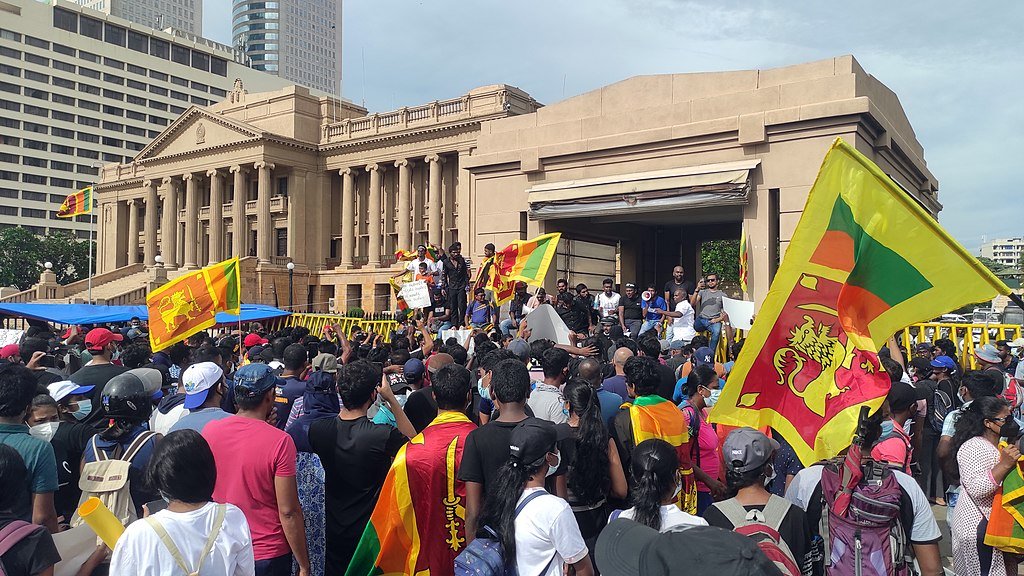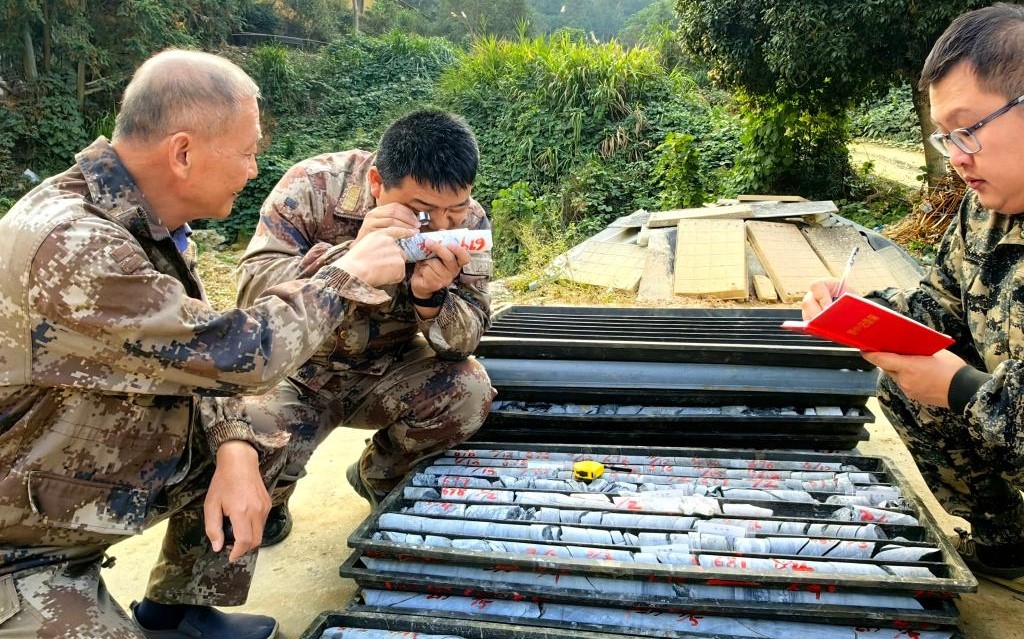PICTURED: Anti-government protest in Sri Lanka on April 13, 2022 in front of the Presidential Secretariat. PC: AntanO. CC 4.0.
Story at a glance…
-
As Sri Lanka tip toes through financial ruin, two nearby economies face similar circumstances.
-
Bangladesh and Pakistan are suffering from similar problems, and both have raced for IMF loans.
-
With nothing to support their export markets, little buoys these fiat currencies’ value and makes importations harder.
It may very well be that in a few years, Sri Lanka, Bangladesh, and Pakistan will all be considered variations on a theme.
Underlying similarities in economic policy hint at similar outcomes. While variations exist among the strengths and weaknesses in each, economic laws are all almost equally ignored by the central banks and fiscal lever-pullers alike.
The ongoing story of Sri Lanka is a warning to both, and a symptom of a greater trend in the world—towards debt-based financing, protectionism, deliberate inflating of domestic currencies, misunderstandings of trade, cheap credit, growth in the size of government, limiting market and business freedom, and a rush towards policies geared towards preventing climate change.
Talal Rafi and Brian Wong recently compiled the history of Sri Lanka’s current inflationary depression, attributing it to a shopping list of bad choices going back to the 1970s but which really kicked off with some 2019 tax cuts without corresponding decreases in the size of the public sector that downgraded Sri Lanka’s credit rating, shutting her off from much of the international capital market.
Instead of choosing a sustainable path out of the pandemic that followed, like what was done in Morocco or Sweden, Sri Lanka imposed draconian lockdowns that didn’t lift for the 2020 tourism seasons, such as was done in other countries like Italy which also locked down hard. This devastated one of the chief sources of foreign currency entering the country—a key component in the current crisis.
Imagining the destruction of economic activity incurred in most of the world over COVID-19 was similar in Sri Lanka, this was followed by falls in expatriate remittances, unfulfillable election promises of cheap food and energy, a ban on chemical fertilizers and a shift to organic farming overnight led to a 50% drop in agricultural output, all of which put a load on the country’s economic governance that broke its back entirely.
Among those policies were a huge public sector burden in which 36 percent of government revenue was going towards salaries and pensions of current and past employees, a tax system in which 1% of Sri Lankans even qualify to be taxed, and that generated a measly 2% of government revenues.
PICTURED: M2 over 5 years in Sri Lanka. PC: tradingeconomics.com
Then came inflation; widespread, and deliberate. M2, that is liquid money plus savings deposits and money market accounts, doubled since the 2019 tax cuts—exactly because of the 2019 tax cuts.
Foreign currency is imperative for an economy that can’t produce its own energy, and fuel shortages due to an inability to pay, and an inability to collect taxes barring the government from borrowing the money, the country collapsed.
Pakistan teeters
Neighboring Pakistan carries similar burdens. Its monetary inflation rate is equally bad if not worse. Muhammad Akbar Notezai writing for The Diplomat reports that the down turn has been 4,100% over 50 years vs the U.S. dollar. The Pakistani rupee had never crossed 200 to the dollar, but did so this year and how.
Like Sri Lanka, the growth of Pakistan’s national M2 has also doubled since 2019, barring a sharp decrease in Q2 this year. It’s debt to GDP-ratio stands at 72.4%, and under an IMF loan it is currently negotiating, the part of the national budget devoted to debt repayments is set to be 40% through 2022-2023.
Even though the national interest rates remain 13.5% higher than western countries, rhetoric from the central bank retains a deeply-western contradiction.
The bank said the higher rate of 15% should help cool economic activity, prevent a de-anchoring of inflation expectations and provide support to the rupee in the wake of multiyear-high inflation and record imports.
With the enormous growth in money supply, higher interest rates are not key in determining economic activity. What is needed is to withdraw money from circulation. Interest rates were above 10% for much of 2019 and 2020, before falling to 6%, and then increasing again from Q4 2021 onwards. These are not the kind of figures that creates record inflation rates.
Lastly, dwindling foreign currency reserves fell to below $10 billion, leaving a 45-day budget for current import levels. Notezai continues…
In the wake of prevailing economic issues in Pakistan, the Sharif government is negotiating with the International Monetary Fund (IMF), to receive $2 billion in relief funds. For the purpose of attaining a loan package, Pakistan has reportedly taken several steps to reduce its expenditures, increase energy prices, and improve tax collection, as demanded by the IMF. But these moves are unpopular with the public and could lead to yet another change in government this fall, when elections are due.
Moreover, Pakistan has a long history of running to the IMF when economic challenges become dire. Its repeated requests are proof that this is not a long-term solution to Pakistan’s economic woes.
Bangladesh bailout
Bangladesh could be described as being in the best shape financially of the three. Yet that hasn’t stopped them from passing a record budget worth 15% of national GDP, just a hair-less than Pakistan, and seeking a $4.5 billion IMF bailout.
“The country’s $416 billion economy has been one of the fastest-growing in the world for years, but rising energy and food prices because of the Russia-Ukraine war has inflated its import bill and the current account deficit,” reports Reuters.
Bangladesh’s July to May current account deficit was $17.2 billion, compared with a deficit of $2.78 billion in the year-earlier period, according to central bank data, as its trade deficit widened and remittances fell 5%.
As a strong exporter, Bangladesh should be able to prop its economy up provided it retains fiscal sanity, but a progressive lowering of interest rates over the last 10 years paired with a growth in the money supply since 2019 of around 33% will set the seeds for a malinvestment bubble.
What ails Asia?
The primary defense against rising process from supply shocks like those which have occurred following COVID-19 production disruptions and the Ukraine conflict would be to have a competitive export market.
Economic study teaches that exports pay for imports, as it’s necessary for a currency to be changed in order to make an international transaction. But if a country has nothing which other countries wish to buy, the only value that its fiat currency has becomes what other currencies it can be exchanged for in countries where it’s wanted.
This situation becomes very precarious but can easily be defended with strong domestic production.
However a look at two international indexes show just how much trouble Sri Lanka, Bangladesh, and Pakistan are in in this respect.
These are “mostly unfree” or “repressed” economies, according to the Heritage Foundation’s Economic Freedom Index 2022, on which Pakistan is ranked among the 25 least-free economies (153) and Sri Lanka and Bangladesh sit within a stone’s throw at 132 and 137 respectively.
By comparison, eastern neighbor Malaysia sits at 42, Thailand at 70, and Singapore at 1.
Their positions do not improve much on the “Doing Business Index” from the World Bank, where Sri Lanka comes in at 99, Pakistan at 108, and Bangladesh at 168, out of 190. In fact, Bangladesh was the second-worst among stable countries on the Doing Business Index for enforcing contracts.
With so little encouragement of entrepreneurial activity, the growth in real productive capacity is unlikely to protect these South Asian currencies from rising prices, which coupled with other factors, spells disaster for the region.



